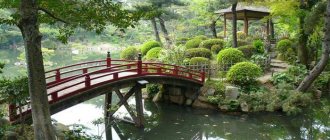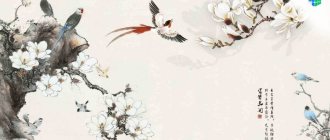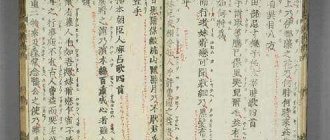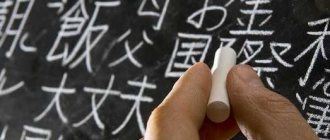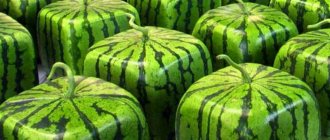| Library of practical advice |
| How to do it right |
| ⚒ |
| Fount of wisdom |
| Introduction · All Guides · Random Guide |
| Find some good advice |
| Definitions of terms |
Konniti:wa:
, my little Japanese-lover-kun (or my little Japanese-loving-chan)!
O-genki des ka?
The shell of the sacred turtle revealed to me that if you are reading these lines, then you have drunk enough sake, grown enough bonsai, performed enough tea ceremonies and created enough ikebana for the culture of the Land of the Rising Sun to permeate your belly[1] to the last appendix. And if so, she undoubtedly now urgently demands a way out, desu
. There is only one way out - hara-kiri. And this solution was found long ago by the noble samurai and the sophisticated geisha who joined them.
Usually noble samurai and sophisticated geisha, in order to give vent to emotions, engage in yaoi and hentai, contemplate cherry blossoms and draw hieroglyphs on rice paper. But what if sakura doesn’t grow in your area, you don’t know the hieroglyphs, and you didn’t bring rice paper to the Stationery store? Masaka!
There is only one way out - hara-kiri. Well, there is another truly Japanese way to express your sublime feelings. This is a haiku essay.
Just tell yourself: Dekimas!
And - banzai, may the bright Amaterasu and this manual help you!
And yes - don't forget to call me sensei
.
Content
- 1 Sa: hajimemase:
, or Let's begin! 1.1 Preparation
- 3.1 Title
- 4.1 What to write about?
- 5.1 Examples of haiku in Japanese
, or Congratulations!
Sa: hajimemase:, or Let's begin![edit]
Preparation[edit]
Canonical attire for writing haiku Even more canonical attire for writing haiku But this is not good... The great Japanese poet Wasabi Tiramisu in work clothes carries retribution in the name of the Moon preparing to start writing haiku Writing haiku
must be carefully prepared. First of all, you should get into a contemplative mood. Put everything aside for a while. Do one or two hara-kiri. Eat fugu. Catch and kill several Pokemon. Watch 100-200 anime episodes without translation. Wear a kimono or sailor fuku.
Wonderful! Katajikenai!
Now you are ready for the sacrament of hokkusposition.
Poem in two parts
Another important feature is the comparison of two elements. Traditionally, the two parts of a poem are separated by a “cutting word,” kireji. For this purpose, words such as ya, kana, cari are used, which are treated differently during translation due to their vague meaning. The most famous haiku, written by Matsuo Basho (1644-1694), includes the word ya.
古池や蛙飛びこむ水の音Furuike ya
/ Kawazu Tobikomu / Mizu no otoOld Pond - The frog is jumping, The sound of water
In a certain sense, I represents a verbal mark that is not translated into other languages, in which case it is represented by a dash, but different translators may use a period, an ellipsis, an exclamation mark, or no translation at all.
The question of how best to translate kireji probably does not have a simple satisfactory answer, but what is important is that it clearly divides the poem into two pictures, or scenes - the quiet calm pond contrasted with the movement and sound of the frog jumping. This opposition plays an important role in classical haiku. Yosa Buson (1716-1784), for example, wrote a haiku in which we see yellow flowers against the evening sky:
菜の花や月は東に日は西にNa no hana ya / tsuki wa higashi ni / hi wa nishi ni
Crepe flowers - Moon in the east, Sun in the west
Form[edit]
It would seem that you are already sporting a sailor fuku - what other uniform is needed? But you're not the only one who needs a form. Haiku also requires a certain, canonical form, desu
.
Title[edit]
Coming up with a good name is half the battle. According to the rules, a proper title should be 2-3 times longer than the haiku itself in order to contain as many details as possible about your life and state of mind at the time of writing. It is also very good to mention yourself (it is not forbidden to use the third person). It is important to use as many words as possible like “remember”
(especially -
“remembering the past time”
),
“sad”
,
“wandering”
,
“contemplating”,
etc., as well as mentions of the customs of common people or the beauties of nature.
What do you want? Haiku is lyrics, fuck desu
.
For example, here are a few successful names from the classics:
- “I remember the past while collecting young herbs”
- “From songs to my beloved, sent with orange flowers”
- “I’m sad, alone, in a hut, having buried my friend - the monk Dokkai”
- “When I lived in Saga, the scent of plums came to me from the monastery garden on the other side of the road.”
And - a couple of masterpieces performed by Basho himself:
- “I lived a miserable life in the city for nine years and finally moved to the outskirts of Fukagawa. One person wisely said in the old days: “The capital Chang'an has been the center of fame and wealth since ancient times, but it is difficult for someone who does not have money to live in it.” I think so too, for I am a beggar.”
- “I’m sad looking at the moon; I am sad, thinking about my fate; I'm sad that I'm so inept! But no one will ask me: why are you sad? And I, being lonely, feel even sadder.”
Yes, these were also haiku names. Suteki
, is not it?
Size[edit]
Remember once and for all: proper haiku has 3 (three!) lines! Three! Not two, not seven and not forty-two. Only Darth Herohito could compose haiku with a floating dimension of the number of lines (2, 4 and even 5). But for ordinary poets (even brilliant ones), three lines is a constant bar.
The great Japanese poet Mayakobusuke-san said this well:
* * *
We say “three”, We mean “haiku”. The reverse is also true.
And it’s not for nothing that another great Japanese poet Goguryo-san exclaimed:
* * *
Oh three, Bird - three! Who invented you?
Unfortunately, in modern Russia there are too many fake Chinese-made haiku (mostly four- and five-line ones) being distributed. Example:
Li Bo. "Yu"
Yes tou, yes tou, Xia yu bu chou. Ren Jia Yu San, Ni Yu Da Tou.
Abunai!
Once again: this is not real haiku. Don't be fooled.
For a long time it was believed (mainly by the Japanese) that classical haiku should have exactly 17 syllables, arranged in a 5-7-5 pattern. This caused objections from German poets, since this rule did not allow them to compose haiku in German - after all, the average German word contains 54,308,428,790,203,478,762,340,052,723,346,983,453,487,023,489,987,231,275,412 390,872,348,475 syllables (cm . German
). Since Japan was an Axis ally of Germany at that time, Emperor Herohito allowed the syllable limit to be lifted; For this, the Germans gave Japan a pocket aircraft carrier.
In general, now the number of syllables in haiku can no longer be counted. But brevity is still welcome - after all, it is s.t.!
How can haiku help you personally? You will become a better writer
It's as simple as that. I give a 100% guarantee. Okay, let's be honest - 85.3%. Even if you just try, it will leave a mark and resonate again.
Why is that?
1. Haiku changes the way you look at the world. You start thinking in different categories. Leave the center of the universe and try to convey what is happening to you, without direct descriptions and naming. Looking for resonance with the world around you. You begin to notice what color the sky is today, where a branch leans under the snow, how a chocolate wrapper flashes under the headlights of a passing car. You become part of the world, it happens naturally. Part, not the center. Very useful practice.
2. Haiku forces you to write very concisely. You have to look for words - so that all three lines are filled with meaning, the images are not repeated, and at the same time you convey not only the facts, but also the mood. But they didn't name him. It's difficult.
3. You begin to appreciate the power of every word and learn how to say enough, but not too much. In haiku there is such a concept - an unfinished bridge. It’s enough to say “fallen leaves” so as not to mention that it’s autumn. You will be surprised how many words you can avoid writing and still be understood.
Examples at random
quiet quarrel
counting gray hairs
in her parting
Everyone is here. And a long life together, and the peculiarity of the relationship, huh?
pigeon outside the window
coos
coffee maker
And here’s my favorite technique: the shifter. You can read the first two or last two lines. They are connected by sound.
Contents[edit]
When contemplating this picture, the average Japanese is able to add up to 1010101110111010 haiku.
None of them will mention red flowers and blue mountains. 99.9% of haiku is dedicated to this landscape. The remaining billion is dedicated to sakura petals and the reflection of the moon in the water. The content of haiku should combine brevity, grace and philosophical depth. It is considered especially chic to start in health, and end for the repose of devoting the first two lines to one plot, and in the third SUDDENLY
talk about something else, thereby giving an unexpected interpretation and returning the meaning to the beginning.
It’s also good to suddenly stop the train of thought, SUDDENLY
making the reader wonder what the author really wanted to say.
In general, good haiku is always SUDDEN
.
This is the Tao, desu
.
This haiku rule is perfectly illustrated by the great Japanese poet Makukarutenyo-san:
“I’m sad about yesterday, when all sorrows seemed so far from me”
Oh I believe In yesterday SUDDENLY!!
What to write about?[edit]
Yes about everything. The point of haiku is that it is not reality that matters, but your experiences. Which, in turn, must be expressed through some objects of reality.
The less these objects fit your feelings, the better (I remind you once again: good haiku is SUDDEN!
). Since the experiences of the haiku author are always sublime, it is best to express them through all sorts of rubbish. For example, the feeling of love can be expressed through crickets, nostalgia - through a straw broom, and aesthetic pleasure - through the ass through a toad in a pond. These are the laws of the genre.
The exceptions are the moon, sakura and Fuji. Everything can be expressed through them.
In extreme cases, you can not express anything, but simply whine and complain about fate. This is also very much appreciated.
A few selected haiku by famous Japanese poets[edit]
Mikairu Rerumonetobu. “Wandering through the snowy country, I remember the lost capital”
Tell me, uncle-san, is it not for nothing that Moscow, burned by fire, was given to the Frenchman?
Kamikaze Fussiken. “On the seashore I reflect on the immutability of nature”
There is a green oak near the Lukomorye, a golden chain on that oak tree, day and night...
Kamikaze Fussiken. “Sitting with a glass, I lament human futility”
God forbid I go crazy. No! Lighter staff and sumo...
Sasya Buroku. “Sometimes I come home drunk in the dark. Got lost..."
Night, street, lantern, pharmacy. Night, icy ripples of the canal. Pharmacy, street, street lamp...
Sasya Shorune. “I listen to the cry of a child punished with a bamboo stick for getting a D+”
There are cockroaches in the kitchen, leaving the black bread, thinking a little...
Advice
You may have come to this page having already enjoyed the classic masterpieces of Emperor Darth Herohito.
His immortal creations inspire every connoisseur of beauty and even inspire a desire to try to surpass their author, don’t they? Alas! Only Chuck Norris managed to surpass Darth Herohito, and even then only in one discipline, and no one can surpass him in the composition of haiku. So desu nee...
What sadness! There is only one way out - hara-kiri. But you can try to at least get closer to the unattainable ideal. As Bushido says, the goal of the path is not in achieving the goal of the path, but in the process of achieving it.
Iban Turogenyobu. “In days of doubt, in days of painful thoughts, I feel sad about the fate of my homeland.”
How not to fall into despair when you see what is happening at home?
Shiroju Yoshinen. “In a village tavern, a rogue cook served me incorrectly prepared fugu fish.”
I have only one fun left: Fingers in the mouth...
Indications for the seasons
Another important feature of haiku are kigo, “seasonal words.” In the poem quoted above, Dan Sutejo is the “snow” indicating winter. In the following haiku by Masaoka Shiki (1867-1902), persimmons indicate autumn. The action takes place near the famous Horyuji Monastery in the city of Nara, the ancient capital of Japan:
柿食えば鐘が鳴るなり法隆寺Kaki
kueba / kane ga naru nari / Ho:ryu:jiPersimmon
took a bite - the bell of Horyuji Temple rang
The custom of using seasonal markers in haiku developed when the genre was formed from other forms, but these words also help the poet with word choice and add additional depth to the meaning.
The saijiki, a dictionary of “seasonal words,” divides them into five parts—four for the seasons and one for the New Year. In addition, they are classified into sections - animals, plants, human activities in different periods of the year.
Examples of “seasonal words”
| Spring | hinamatsuri (doll festival), uguisu (warbler), hibari (lark), ume (plum blossom), hana, or sakura (Japanese cherry) |
| Summer | niji (rainbow), fu:rin (bell ringing in the wind), yukata (casual light clothing), kingyo (goldfish), himawari (sunflower) |
| Autumn | meigetsu (full moon before the autumn equinox), inekari (rice harvest), samma (saury), shika (deer), momiji (autumn foliage) |
| Winter | shimo (frost), tsurara (icicle), tsuru (crane), kaki (oysters), mikan (mandarin) |
| New Year | kadomatsu (pine decorations), otoshidama (New Year's cash gifts for children), hatsuyume (first sleep of the year), hatsumo:de (first visit to the shrine of the year), mochi (rice cakes) |
Haiku in Japanese[edit]
Haiku (side view)
Composing haiku in Japanese is very Japanese, desu!
Japanese haiku differs from Russian haiku in that they are Japanese.
If you have already mastered the above exercises, it will not be difficult for you to compose real Japanese haiku. Yokatta!
Do everything exactly the same, only use Japanese instead of Russian words.
I hope nihongo-ga dekimas ka?
Examples of haiku in Japanese[edit]
The samurai goes around the country, wanting to dispel the autumn sadness
Osshu-sha crap Hoju tamaishama, hiccup Isshu sake naharyavu
In a foreign land I remember my homeland, contemplating the whirling of falling leaves
Samurai bitches Shirote sake-ne nariri Hoshu domoi
Kakkoi kawaii
[2], isn't it?
